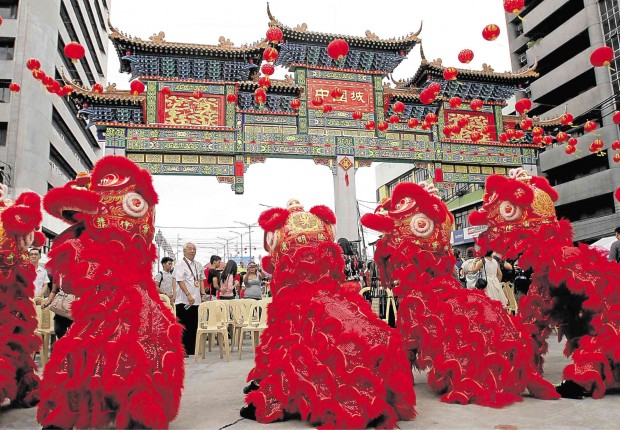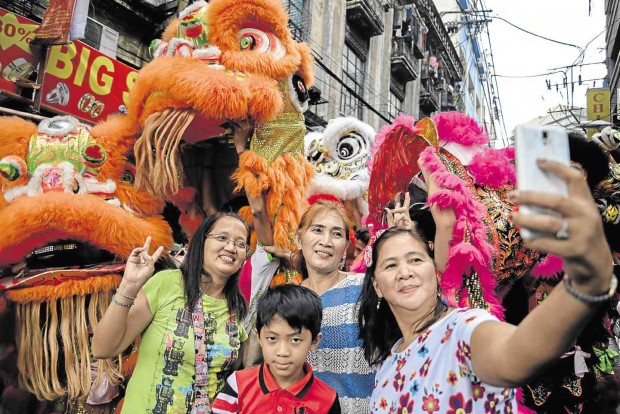For Binondo’s believers, Chinatown worth the walk

SYMBOL OF REVIVAL. The P28-million Chinese-Filipino Friendship Arch was erected in Binondo by the Manila city government last year. RICHARD A. REYES
From a mere trading neighborhood to a cultural heritage attraction.
In a nutshell, this is how Binondo is being promoted by Ivan Man Dy, head of Old Manila Walks, a group offering walking and food tours of the old district which will be the focus of Chinese New Year celebrations today (Monday).
“Before, Binondo was synonymous to Divisoria, where the traditional wholesale retail businesses are. Now people are interested in Binondo’s overall history, its heritage,” Dy said of the country’s Chinatown.
Even on social media, the Chinese-Filipino community is showing more interest in getting to know their roots through a Facebook group called Binondo Heritage group, he added.
His tour participants have been keen on exploring not just the commercial strips but also Binondo’s narrower alleys where many old family-owned businesses still thrive. “Many of these businesses are either food-related or shops catering to special needs.”
Article continues after this advertisementA trustee of the Heritage Conservation Society, Dy admitted that the Tsinoy community could do better with more support from the local government when it comes to preserving heritage structures in the area, such as the Philippine National Bank (PNB) and El Hogar buildings.
Article continues after this advertisementThe PNB Building is set to be demolished after being declared structurally unsound by the city government, while the National Historical Commission of the Philippines was able to stop the demolition of El Hogar.

ENTER THE DANCING DRAGON On the eve of the Chinese New Year, Manila residents on Sunday start the celebration on Ongpin, Binondo, with a selfie. eloisa lopez
Not that change isn’t welcome in Binondo, Dy said as he took note of new malls being built in the district. “To a certain degree, a new building brings new life. The longevity in Binondo lies in its adaptability, especially in the economic sense. Businesses stand to gain more as the area becomes more known as a heritage attraction.”
If you ask local officials, Manila’s Chinatown has become more tourist-friendly for the past few years—despite the perennial problems it shares with the rest of Metro Manila, like traffic congestion and petty crime.
Former councilman Raffy Alejandro of Barangay 293 said traffic in Binondo and the roads surrounding it remains heavy, especially now that cars are easier to purchase and more people flock to downtown Manila for the cheaper goods.
But the vehicle flow has improved, according to Ver Eustaquio, who heads both the city’s barangay bureau and Task Force Organized Vending in Chinatown. “There are still bottlenecks but the point is, the vehicles are moving.”
The improvement in traffic, Eustaquio said, has helped bring the crime rate down as it is now easier for the police to go on patrol. “The police used to receive complaints of theft almost every three hours. But now criminals know it’s easier to catch them.”
“It’ll take years to improve the system. What’s important here is we’re doing something to start the improvements,” he said. “I saw tourists taking selfies in the plaza and to me that’s an improvement.”
Manila Councilor Bernie Ang on Friday said the district would be welcoming the Year of the Fire Monkey with a bang, with Chinese-Filipino business and civic groups and the city government raising a P4-million budget for the festivities. At least 17 Tsinoy groups donated P200,000 each while City Hall allotted P500,000, he added.